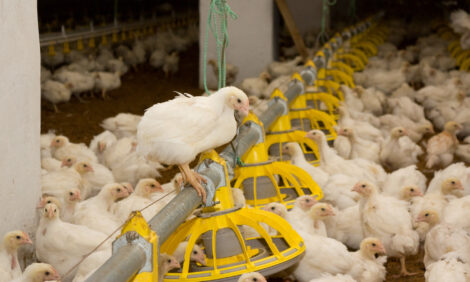



Housing Systems: a Starting Point of Good Welfare
ANALYSIS - Dr Werner Bessei of the University of Hohenheim in Germany explores the roots of the growing public concern over animal welfare in many developed countries and how housing systems and other factors impact human perceptions of animal welfare. Senior editor, Jackie Linden, reports on the highlights of his recent presentation.Welfare has become the number 1 issue for poultry production in Europe and North America, said Dr Bessei [pictured] in the introduction to his presentation to the 18th World Veterinary Poultry Association (WVPA) Congress in the French city of Nantes in August. And in other countries, awareness grows as soon as they consider exporting poultry products to these regions.
Animal welfare perception is a human thing, he said. In our generation, interest in animal welfare started in laying hens in the politically charged atmosphere of Europe in the 1960s - but why, when sows and cows were usually kept tethered at that time? Dr Bessei suggested that hens in battery cages became a symbol of captivity; the intensification of their conditions from free-range to battery cage had been both rapid and dramatic.
In fact, this attention to animal well-being was nothing new. Greater freedom for animals was included in the proposed constitution following the French Revolution in the late 18th century.
Industrialisation came to Europe and North America in the 18th and 19th centuries, creating vast human wealth for the few and misery for much of the population. These conditions raised awareness of the suffering of animals, such as ponies in coal-mines, and they became the foundation of the animal welfare movement.
The publication of Ruth Harrison's book, 'Animal Machines' in 1964 coincided with the demand for greater freedom by students and other political activists who were in conflict with old traditions and the establishment in general.
The concept of 'Five Freedoms' for farm animals originated with the Brambell Report, published in December 1965. It was the Five Freedoms that were a first step in defining the needs of animals in terms of freedom from hunger/thirst, discomfort, pain/injury/disease, fear/distress and the freedom to express normal behaviour.
The Five Freedoms were associated mainly with physical conditions - housing and equipment - as well as good husbandry and veterinary care.
Four of the five focused on the absence of unpleasant conditions; since then, the focus has moved to the conditions required to create positive feelings, such as wellness and the provision of cognitive challenges.
There is no such thing as a 'steady state' in animal welfare, according to Dr Bessei.
In order to turn these ideas into practical reality, the EU began its Welfare Quality scheme, with 46 areas of investigation to define the appraisal of welfare in farm animals. Each was based on four principles of good feeding, health and housing and appropriate behaviour; each of these has a number of sub-groups, which need to be measured and scored to come up with a Principle Score. These schemes have now been completed for laying hens and broilers.
Dr Bessei made the point that these assessments do not give an indication of the balance between the positives and negatives in any given situation. There is a classification of the four criteria (feeding, housing, health and behaviour) as inadequate, acceptable, good or excellent. If one of these aspects is inadequate, does it make the whole system inadequate if the other factors scored excellent?
Furthermore, he said, assessment is, at least partially, based on emotional criteria and these are highly dependent on the observer's perception.
"This is a highly dangerous development," said Dr Bessei.
Citing the example of space allowances for laying hens as a 'hot-spot', Dr Bessei explained how the minimum has been increased from 450 square centimetres per bird in a battery cage, to 750-890 square centimeters in a furnished cage, 1,100 square centimetres for floor systems and 40,000 square centimetres for free-range birds.
Clearly, the additional space offers the bird more freedom but Dr Bessei stressed that it does not take account of other factors and extensive systems - in themselves - may not offer better welfare.
For broilers, the focus of welfare has been on stocking density.
In terms of environmental enrichment, Dr Bessei highlighted that this aspect too, is subject to the perception of the observer. He cited his own experience of visiting a modern egg farm with a welfare activist; while he commented on the additional space, perches, next box and scratching area in the large furnished cages, the activist could not see beyond the bars of the cages and the absence of freedom for the birds.
However, Dr Bessei said: "Welfare sells." Many retailers have developed their own standards, often independent of the science and the animal's viewpoint.
He concluded that legal welfare regulations should cover minimum requirements, based on scientific knowledge and that standards beyond the legal requirements may be used as a sales argument - providing that they do not mislead consumers.








